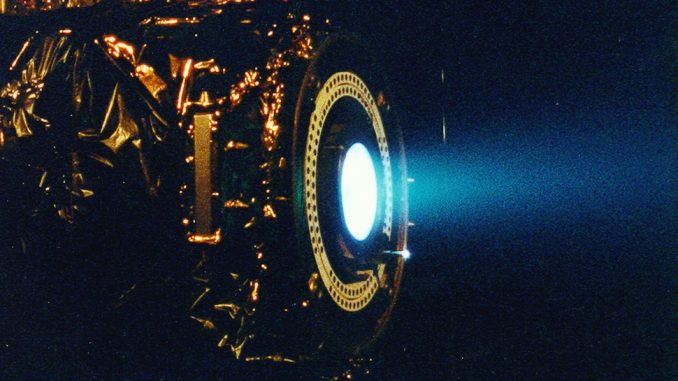
The world’s first EM Drive is about to be launched into space – allowing scientists to figure out whether it is possible for a rocket engine to generate thrust without any exhaust or propellant.
Some view the EM Drive as an impossibility due to the fact that it goes against one of the most fundamental laws of physics.

BYPASS THE CENSORS
Sign up to get unfiltered news delivered straight to your inbox.
You can unsubscribe any time. By subscribing you agree to our Terms of Use
Latest Video
Sciencealert.com reports:
As Newton’s Third Law states, “To each action there’s an equal and opposite reaction,” and many physicists say the EM Drive categorically violates that law.
This is because in order for a thruster to gain momentum in a certain direction, it has to expel some kind of propellent or exhaust in the opposite direction.
But the EM Drive simply goes in one direction with no propellant, and thus violates the law of conservation of momentum, which Newton derived from his Third Law.
And not only that, but it could produce enough thrust to blast humans to Mars in just 70 days.
As Fiona MacDonald put it back in June, space enthusiasts love to get excited about the EM Drive, because if it works, it has the potential to remove major barriers in our need to explore the Solar System and beyond.
But just as many are sick of hearing about it, because, on paper at least, it doesn’t work within the laws of physics.
Invented by British scientist Roger Shawyer back in 1999, the EM Drive – short for electromagnetic propulsion drive – purportedly works like this.
It uses electromagnetic waves as ‘fuel’, creating thrust by bouncing microwave photons back and forth inside a cone-shaped closed metal cavity. This causes the ‘pointy end’ of the EM Drive to accelerate in the opposite direction that the drive is going.
“To put it simply, electricity converts into microwaves within the cavity that push against the inside of the device, causing the thruster to accelerate in the opposite direction,” Mary-Ann Russon explains over at The International Business Times.
Since its invention, the EM drive has shown no signs of quitting, in test after test. Last year, trials by NASA scientists at the Eagleworks lab revealed “anomalous thrust signals”, and an independent researcher in Germany conceded that the propulsion system, somehow, does indeed produce thrust.
Fast-forward to now, and there are rumours that the NASA Eagleworks paper has finally passed the peer-review process, and is expected to be published by the American Institute of Aeronautics and Astronautics’Journal of Propulsion and Power.
If the rumours by José Rodal from MIT are true – and let’s be clear, they’re still just rumours at this point – it could be huge.
As Brendan Hesse explains for Digital Trends:
“This is an important step for the EM Drive as it adds legitimacy to the technology and the tests done thus far, opening the door for other groups to replicate the tests. This will also allow other groups to devote more resources to uncovering why and how it works, and how to iterate on the drive to make it a viable form of propulsion.
So, while a single peer-reviewed paper isn’t going to suddenly equip the human race with interplanetary travel, it’s the first step toward eventually realising that possible future.”
And on top of all of that, we’re about to see an actual EM Drive be blasted into space.
Guido Fetta is CEO of Cannae Inc, and the inventor of the Cannae Drive – a rocket engine that’s based on Roger Shawyer’s original EM Drive design. Last month, he announced that he would launch this thruster on a 6U CubeSat – a type of miniaturised satellite.
David Hambling reports for Popular Mechanics that roughly one-quarter of this shoebox-sized satellite will be taken up by the Cannae Drive, and they’ll stay in orbit for at least six months: “The longer it stays in orbit, the more the satellite will show that it must be producing thrust without propellant.”
No launch date has been set just yet, but it could happen in as soon as six months’ time.
As Hambling points out, Fetta better hurry, because a team of engineers in China, and Shawyer himself, are both also working on their own launchable EM Drives, so someone’s going to get there first, and we seriously cannot wait to see what will happen.


